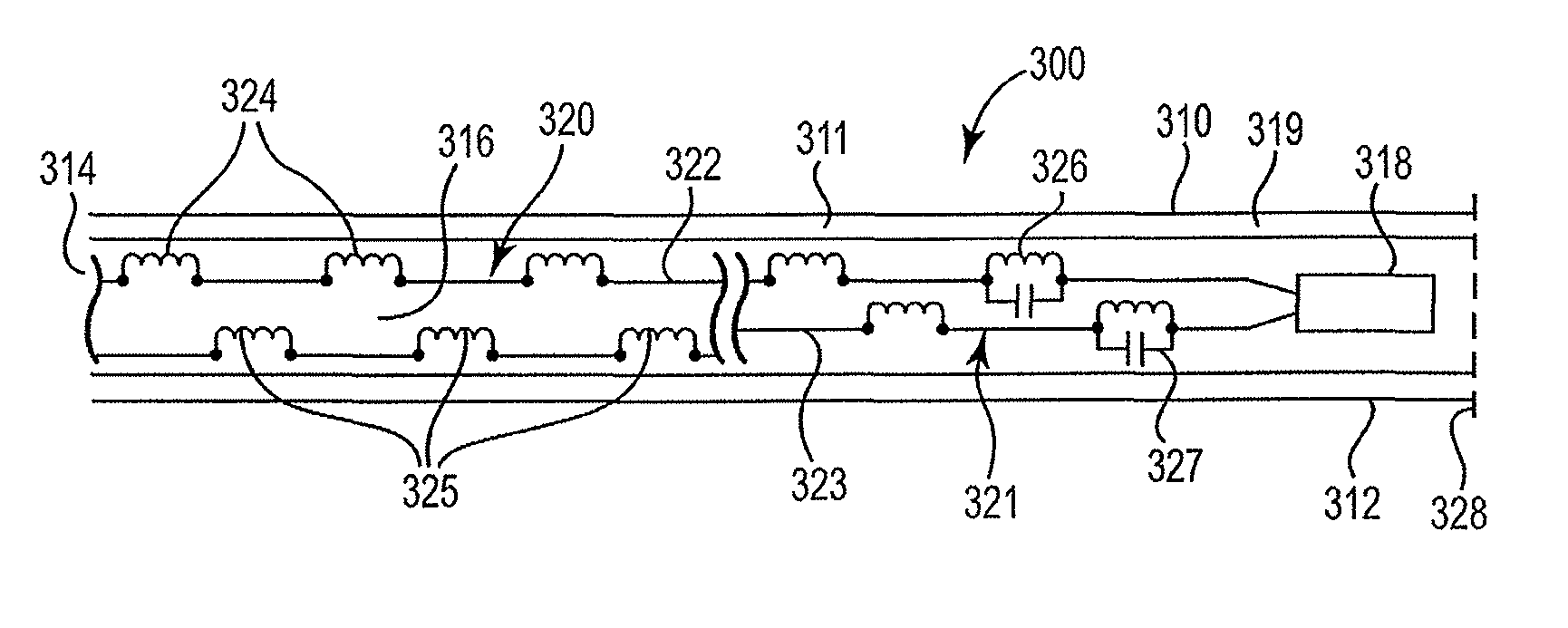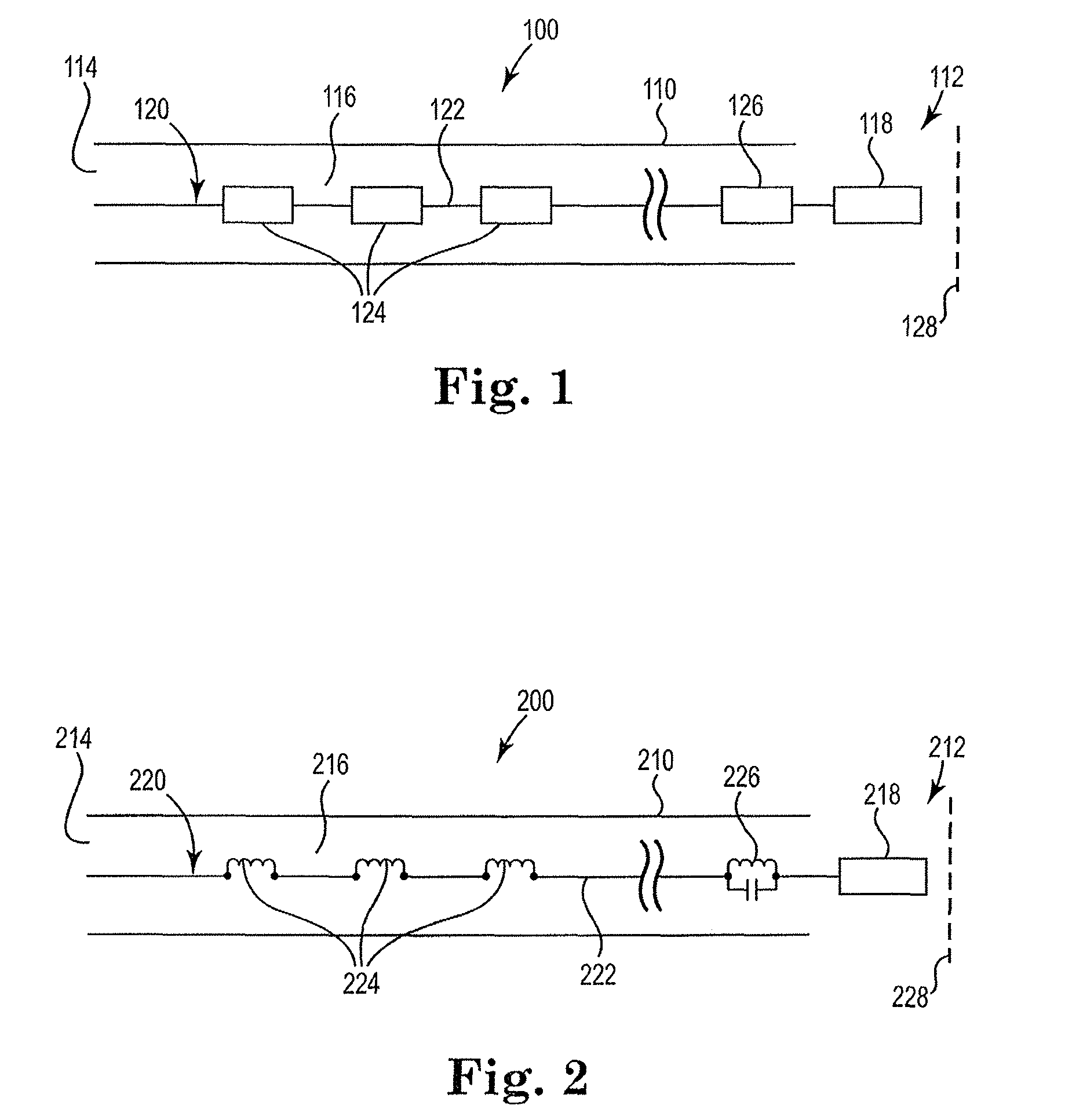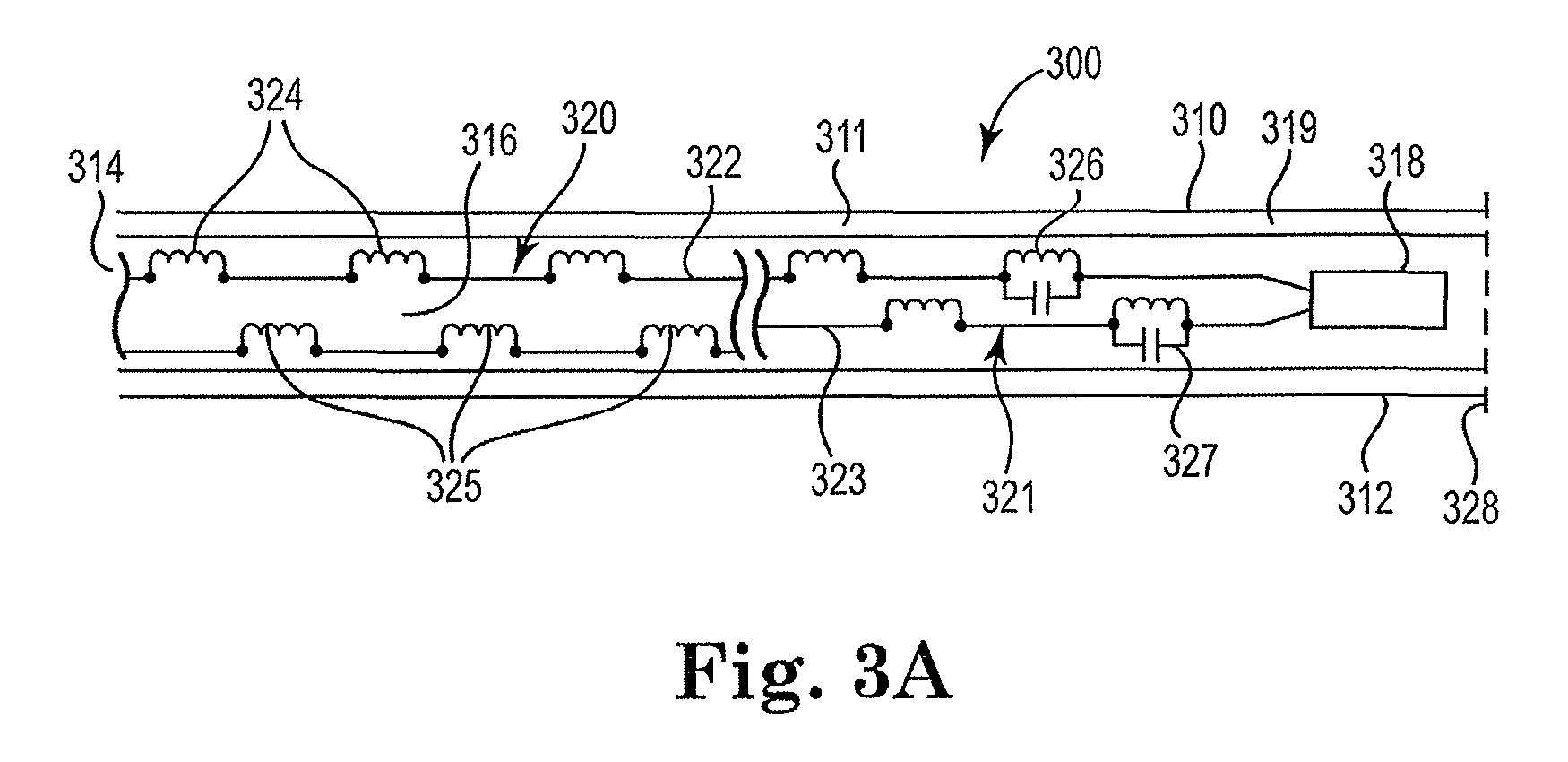MRI compatible cable
a technology of conductive cables and mri, applied in the field of medical devices, can solve the problems of high current density in the skin or tissue below the skin, and patients' safety risks, and achieve the effect of reducing rf-induced heating of tissu
- Summary
- Abstract
- Description
- Claims
- Application Information
AI Technical Summary
Benefits of technology
Problems solved by technology
Method used
Image
Examples
Embodiment Construction
[0047]In describing the invention herein, reference is made to an exemplary cable construct in accordance with the invention. It is contemplated that the current MR compatible cable construct may be used to connect medical devices and peripheral equipment to a patient. As will be appreciated by those skilled in the art the present invention may be used with any medical device or other types of peripheral. Further the exemplary cable construct may be used external to the body and still be in contact with body tissue such as the skin. Also as used herein, a cable is any conductive structure that is in electrical contact with a patient at the cable / patient interface.
[0048]FIG. 1 is a block diagram illustrating the cable construct 100 in its simplest form in accordance with the present invention. Cable 100 broadly includes elongate body 110 having first 112 and second 114 ends and defining a lumen 116 therewithin. Lumen 116 houses circuit 120. Circuit 120 includes at least one wire 122 ...
PUM
 Login to View More
Login to View More Abstract
Description
Claims
Application Information
 Login to View More
Login to View More - R&D
- Intellectual Property
- Life Sciences
- Materials
- Tech Scout
- Unparalleled Data Quality
- Higher Quality Content
- 60% Fewer Hallucinations
Browse by: Latest US Patents, China's latest patents, Technical Efficacy Thesaurus, Application Domain, Technology Topic, Popular Technical Reports.
© 2025 PatSnap. All rights reserved.Legal|Privacy policy|Modern Slavery Act Transparency Statement|Sitemap|About US| Contact US: help@patsnap.com



